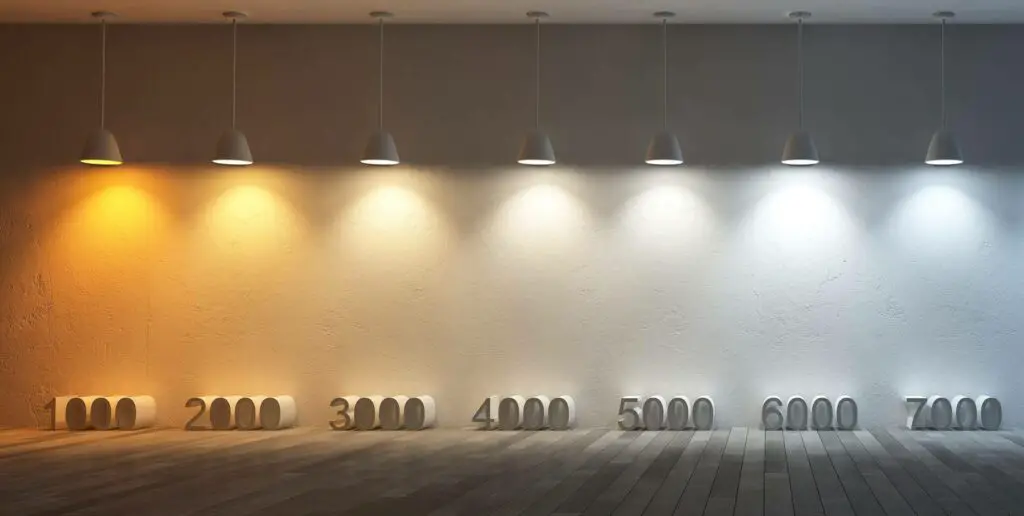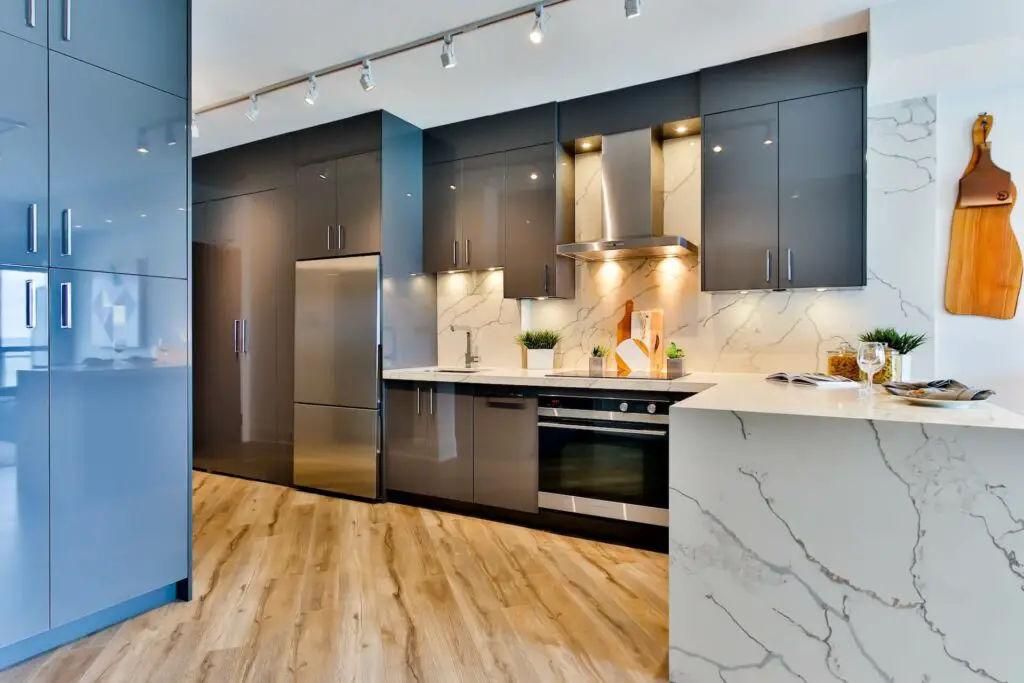Color temperature is possibly the most underrated property of bulbs. Few of us actually realize the true potential it holds to change the feel of a space.
Ever had to replace a bulb and chose one based on its fixture compatibility and brightness? Yeah, you have overlooked color temperature.
From your wall colors to the placement of your fixtures, so many factors can affect the ideal color temperature for your living room.
Let’s dive into them!
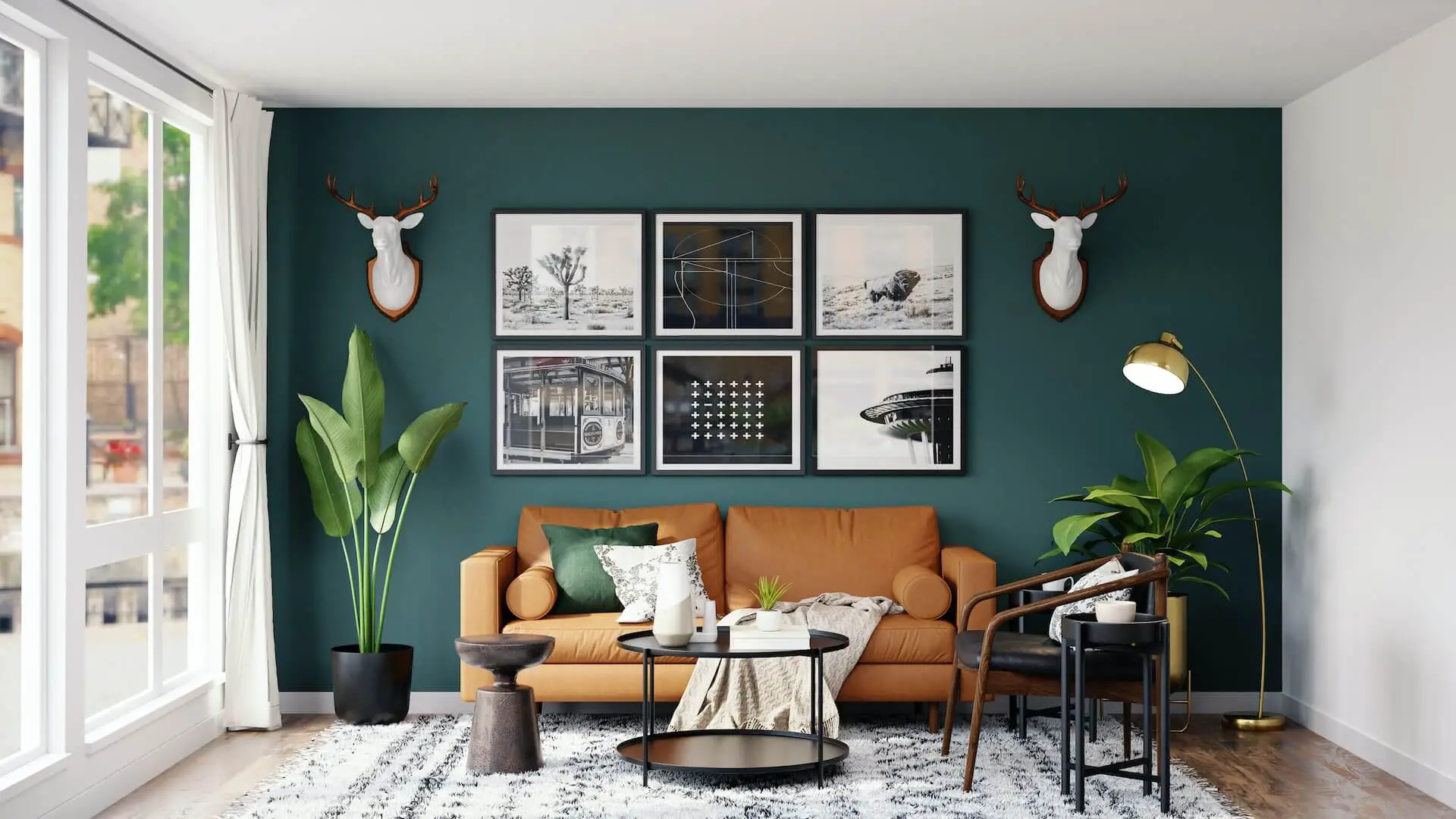
The best color temperature for your living room is 2700-3000 K. This range creates a cozy and inviting atmosphere, which is ideal for the living room. If your living room has warm colors and earthly materials, you can go as low as 2500 K. If it has more cool colors and contemporary materials, you can go as high as 3500 K. Let’s lay down the differences so that you figure out the perfect color temperature for your living room by the end of this article.
What Is Color Temperature?
Color temperature is a property of bulbs that determines how warm (yellowish) or cool (blueish) the light is. It is measured on the Kelvin scale, with temperatures up to 3000 K being warm, 3000-4000 K being neutral, and over 4000 K being cool.
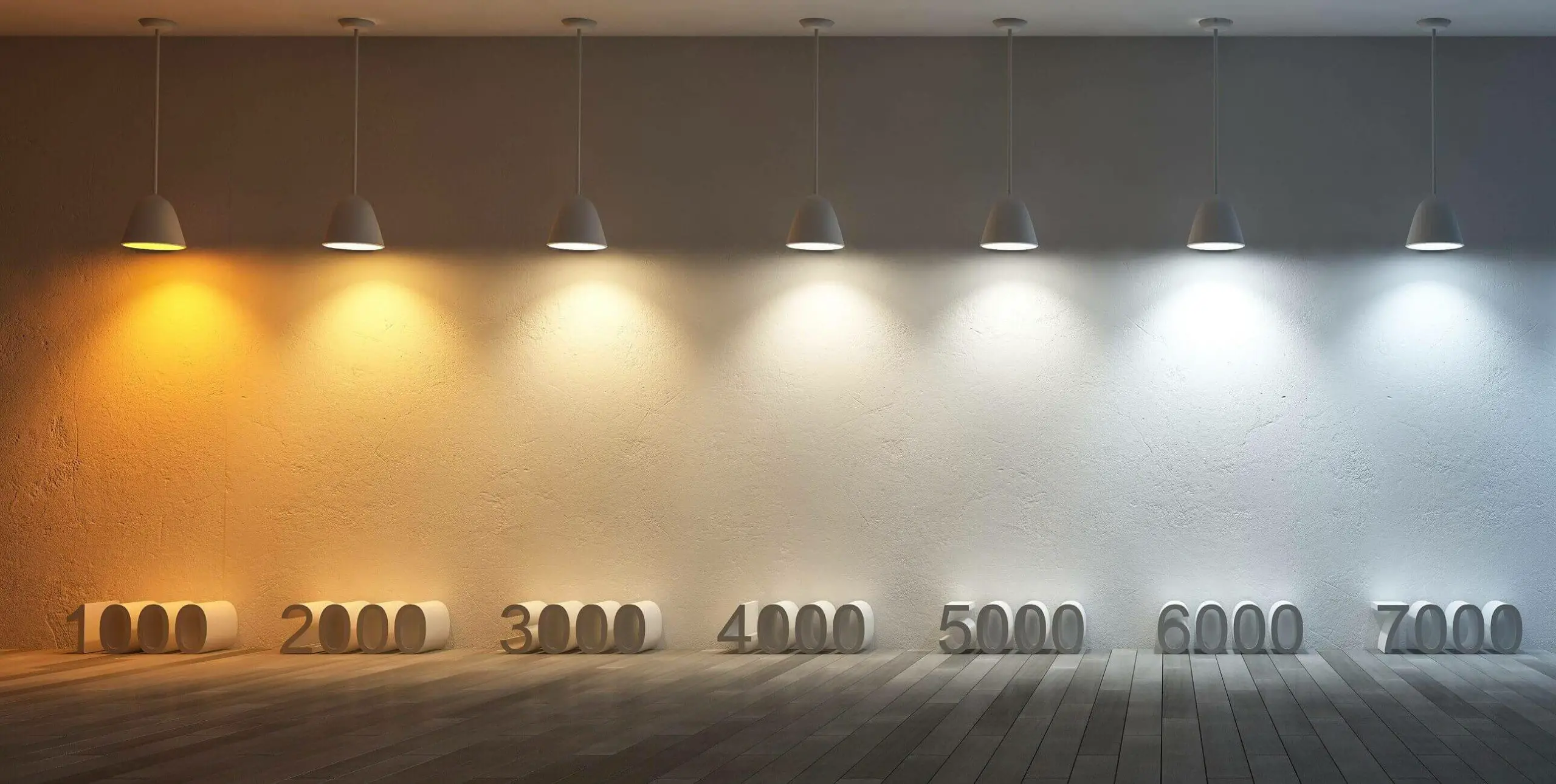
Warmer temperatures are best for relaxation, as they create a comfortable atmosphere and help our minds let go. Cooler temperatures are used in more industrial applications and office settings, as they are better for focus and productivity.
So now, that you have an understanding of what color temperature is and why it is vital, let’s discuss its importance in the living room.
How To Choose The Right Color Temperature For Your Living Room
The first question that should come to mind when choosing a color temperature for a space is “What do I use this space for?”.
The living room is used for relaxation and unwinding, such as spending time with family or watching TV, but also for more practical reasons such as hosting events, playing board games, and performing other kinds of activities. It is, in fact, a multifunctional space.
And this is the reason it is often hard to give advice on lighting a living room without seeing or interacting with the space first.
The living room requires a diverse group of fixtures and bulbs to accommodate all the different events that take place in it.
However, no matter how functional it may be, the living room is never as functional as a kitchen or home office. And by functional I mean used for activities that require focus and attention.
So there – we have our baseline. We should consider warmer temperatures.
And what does that mean?
It means roughly 2700-3000 K. That’s a good place to start.
But as with everything lighting, there is some nuance to it.
The two main parameters that affect this range are the purpose of the individual fixture and the overall color scheme/design of the living room. Let’s look at these one by one.
Ambient lighting
Ambient lighting is the lighting used to illuminate the entire space when there is no daylight available. Think of the main light source in your living room, the first switch you turn on when you enter the room – that’s your ambient light.
In living rooms, the ideal ceiling lights for ambient light are:
- Recessed can lights
- Cove lighting
- Semi-flush/Flush mount lights
- Ceiling fan with light
- Chandeliers (not for low ceilings!)
If you don’t have ceiling lights, or your ceiling lights do not cover your lumen needs, then ambient light will be provided by:
- Torchiere lamps
- Up-lighting sconces
- Wall washers
- Wall-mounted track lighting
All of the above need a color temperature of 2700-3000 K, so that they provide a soft and warm glow to the entire room.
However, things look different for other fixtures.
Task lighting
Task lighting is lighting used to perform certain activities, such as reading a book, playing board games, or practicing the guitar.
In these cases, task lighting is provided by:
- Table lamps
- Down-lighting sconces
- Arching floor lamps
These need a slightly higher color temperature of up to 3500 K.
Warm colors and earthly materials
Colors like red, orange, yellow, brown, and dark green, as well as materials like wood and stone, work best with warmer temperatures. If your home architecture is more traditional, you can drop to 2500 K for ambient light. Task light should be at 3000 K.
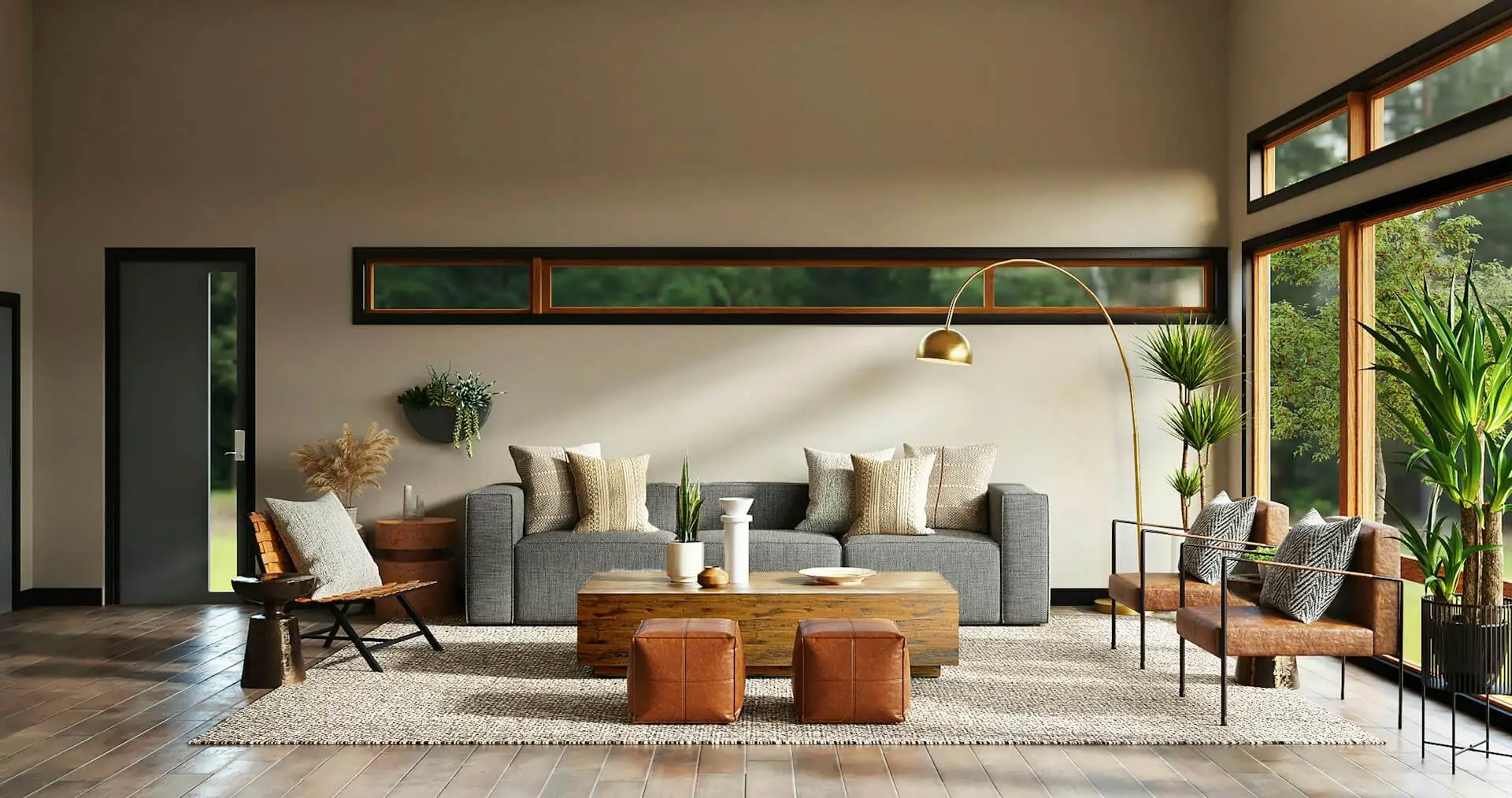
The orange-yellowish light of 2500 K has a fantastic way of accentuating the warmth of these colors and materials, making the space so much more inviting and relaxing.
Cool colors and contemporary materials
Colors like black, gray, blue, green, and white, as well as materials like concrete, steel, and glass, do not go well with yellow light. Warmer light tends to look like a stain on them.
If your home architecture is more Scandinavian or contemporary, go for ambient light of 3000 K. Task light should be at 3500 K.

Wrapping up
The ideal color temperature for your living room is around 2700-3000 K. This is a general guideline so that you can achieve balanced and relaxing lighting. Ambient light should be warmer than task light.
Warmer colors and earthly materials work best with warmer color temperatures, while cooler colors and contemporary materials work best with cooler color temperatures.
Although there is some nuance to this topic, at the end of the day it’s pretty straightforward. However, color temperature should never be overlooked as it can truly create an uncomfortable environment without you even noticing!
